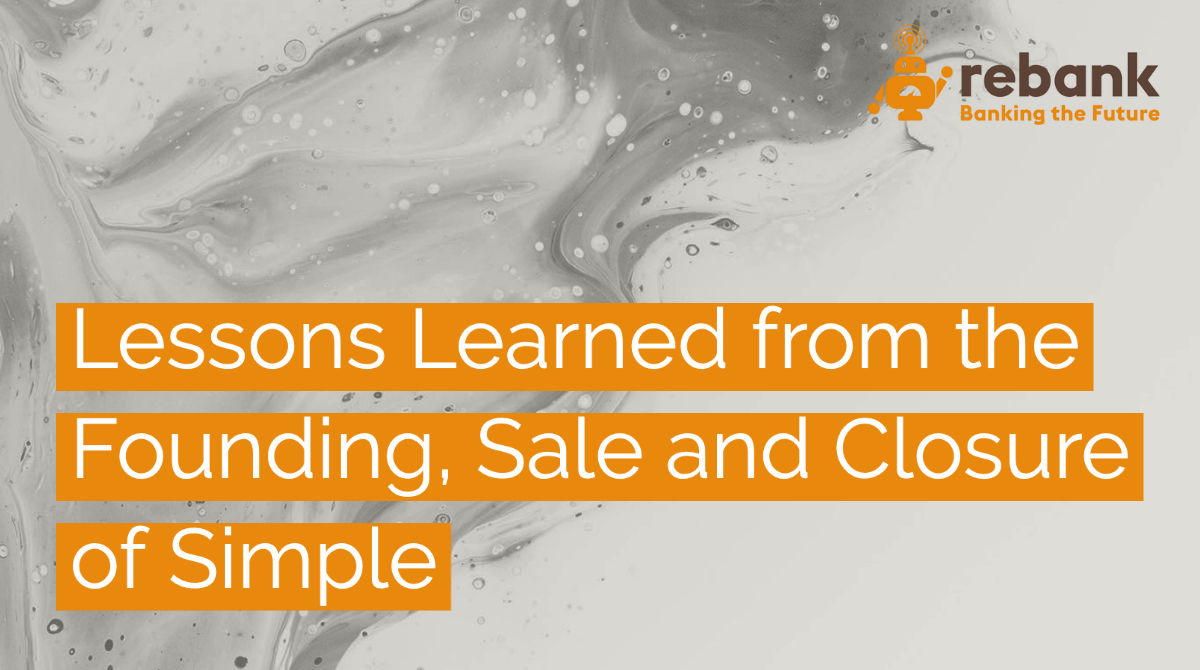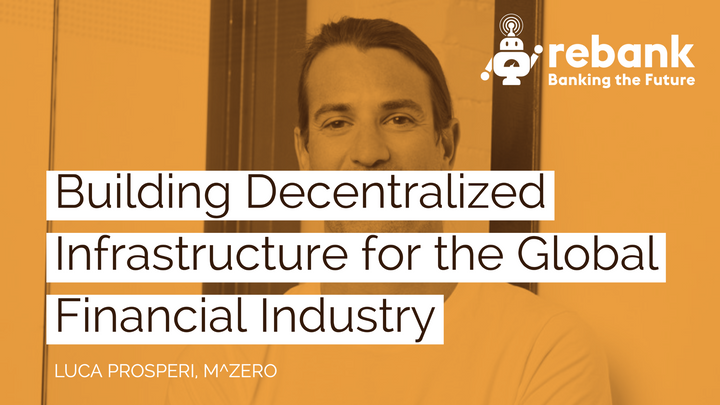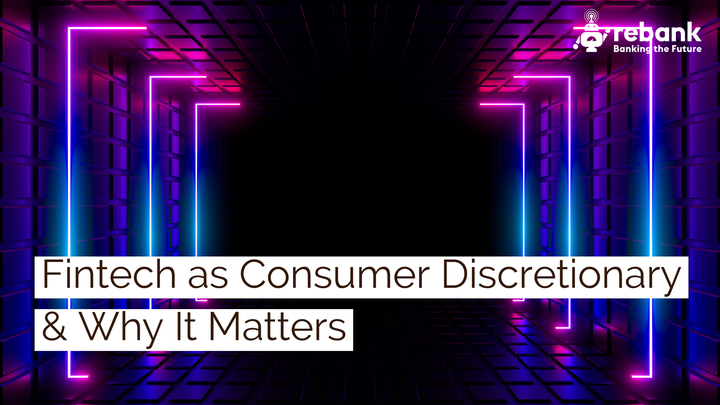Lessons Learned from the Founding, Sale and Closure of Simple

In 2009, Shamir Karkal and Josh Reich founded Simple, the original digital bank.
The concept was straightforward and clearly articulated in an email Josh sent to Shamir in July of that year.
That email set off a chain of events that contributed to the rise of digital banking as a model to challenge the banking incumbancy.
Progress in digital banking since 2009 has been slow in tech years (but not in banking years). At the time of writing, we're twelve years on from the founding of Simple, and the market share of incumbent banks is similar now to then. The world has changed in the intervening period, as digital quickly becomes the primary channel for engagement with banking services. Simple's vision for a customer-focused bank on a phone is now the default model for banking startups, and increasingly for the industry as a whole.
Driven by advances in infrastructure in recent years, the maturing of digital banks including Chime, Varo and Current, and the digital dislocation experienced in 2020, the promise of digital banking is starting to be fulfilled. Fintech is still a drop in the ocean of the US financial services industry, but in the next few years, we're looking at a transformational shift in market share in consumer banking.
However, Simple isn't around anymore to see the industry it created reach maturity. The business was shut down by BBVA in January 2021.
Between Simple's early success and eventual failure, there are many important lessons for founders, investors and the banking industry as a whole.
Here's our breakdown of the top four lessons learned from Simple:
What it means to care about your customers
Simple met its customers where they were, designing its business around the way people actually use money, not conceptual best practices. Rather than building budgeting tools to help users calculate spend and identify areas to save, Simple automated budgeting so users didn't have to think about it. Human psychology around money is powerful and delicate. Budgeting is an emotional exercise, not an intellectual one. If I consider changing my savings habits by spending less on restaurants or travel, I feel emotional discomfort caused by the perceived reduction in my quality of life. That discomfort is much stronger than the intellectual benefit of having a higher savings rate or a marginally larger savings account balance. Simple understood this and designed its products accordingly.
In a recent conversation with Shamir, Simple’s co-founder, he shared an interesting perspective. In his experience, while in many cases it seems like people make bad financial decisions, that's not necessarily true. Generally, he's found, they make good decisions based on the limited, often downright poor, options or tools they have available. Simple saw an opportunity to build better tools to create better options and therefore better outcomes for people.
Infrastructure gives and takes away
Infrastructure decisions are crucial, both in terms of technology and partners. It was a monumental task to create a neobank in 2009, with the poor infrastructure that was available at the time. Technology components that are now basic, like APIs and cloud infrastructure, were not mature then, and the concept of banking-as-a-service didn't exist. Bancorp existed and served frontend partners, as did a few card processors, but options for a startup neobank were extremely limited twelve years ago. Simple would have been reliant on an extremely small number of potential bank partners, with whichever one they selected being a single point of failure for the entire business. Changes to core banking infrastructure at neobanks take many months or even years now, let alone in 2009.
Not only is it painful and costly to replatform from one banking or core infrastructure provider to another, it also slows down new product development significant, if not entirely. As a startup, you must keep moving forward fast, for the benefit of your team, investors and customers. Losing momentum is one of the greatest risks to early stage projects and must be avoided at all costs.
Your company evolves to fit your roadmap
When you start, you set a vision and attract some investors and a few employees that see the same future you do. You make some detailed plans to build toward your vision, and you go. In Simple's case, the vision was a consumer neobank, whose success would hinge on launching quickly with a solid but basic product, iterating, building new features fast, and getting the word out to attract customers. This is true for any digital bank and for consumer tech businesses in general.
Once you start building, and especially after you launch, you start to make prioritization decisions, because you can't do everything at once. Maybe you prioritize new features, or maybe you prioritize customer acquisiton. Simple was forced to prioritize infrastructure on a couple occasions, including after the BBVA acquisition, when they had to replatform onto BBVA's stack.
The decisions you make about what you prioritize shape your company and your culture. If you spend a year quickly building and shipping new products, you set the expectation that rapid product development is important. You design your development cycles around shipping new products fast, and you hire people with related skills.
As you do this, you embed building and shipping fast into your company's DNA. This may be intentional and highly beneficial. However, if you're a startup with limited resources, unless you're very careful, you might realize you're neglecting infrastructure in order to ship new products.
Improving infrastructure might be much more complex and time consuming that shipping new features and require different skills. If you prioritize shipping new products over building new infrastructure, your company's culture, expectations and skills will develop accordingly, making it harder to return to infrastructure later.
If instead you focus on infrastructure, you might deprioritize rapid new feature development or customer acqusition while you shore up your platform. When it comes time to ship fast or add customers, you might find you don't have the appropriate development approach or acquisition marketing skills you need to be successful.
Selling to BBVA
Simple's sale to BBVA in 2014 for $117m was an important milestone for the company, but it also paved the way to Simple's ultimate closure. At the time, BBVA was positing itself as a technology company that provides banking services, rather than a traditional bank. The purchase made sense at the time as part of BBVA's strategic vision. Ultimately, however, ownership by BBVA led to Simple's demise. Following the sale, Simple replatformed onto the incumbent's infrastructure, as highlighted in a case study on BBVA's website (which I expect will be removed soon!). Doing so meant inevitably deprioritizing new product development for an extended period of time, which slowed Simple down just as competitors like Chime, Varo, Cash App and others were forming. Furthermore, issuing through BBVA meant Simple lost access to non-Durbin interchange, one of the main revenue streams for digital banks in their early years. Finally, while more difficult to quantify, especially from the outside, it's difficult to reconcile the strategic objectives of a publicly-traded incumbent bank and a user-centric digital banking startup, no matter what corproate Investor Relations says. The incumbent must focus on NIM trends, cost of risk, operational efficiency and proven revenue streams to appease investors, while Simple needed to focus on exponential user growth and rapid new product development.
One of the most amazing parts of the Simple story is the way Josh and Shamir expressly set out to make as many of their employees as possible rich from the BBVA sale. Rather than maximizing the financial benefit to themselves, Josh and Shamir intentially directed millions of dollars that they would have personally received to their employees instead. Not only was it a beautiful act of generosity toward the team that contributed to the founders' exit, but it also helped seed a new startup ecosystem around Simple, as employees with newly found cash started new companies and invested in others.
Distribution and reinvestment of earnings into new startups has been one of the most powerful drivers of tech innovation and success over decades, spawning everything from Tesla to LinkedIn to YouTube to Silicon Valley itself. I'd be interested to know how much wealth PayPal founders and employees derived from their early involvement in that disrputive payments company versus the subsequent entrepreneurial and seed investing endeavors that Paypal's success enabled. Generosity pays massive dividends.
Deep dive on Simple
We recently did a deep dive with Shamir on Simple's founding, sale and closure, including observations on what worked and what didn't, on our podcast. Check out the full episode, here. We covered lessons learned about building, launching and scaling a digital bank, and expectations for the future of fintech.


